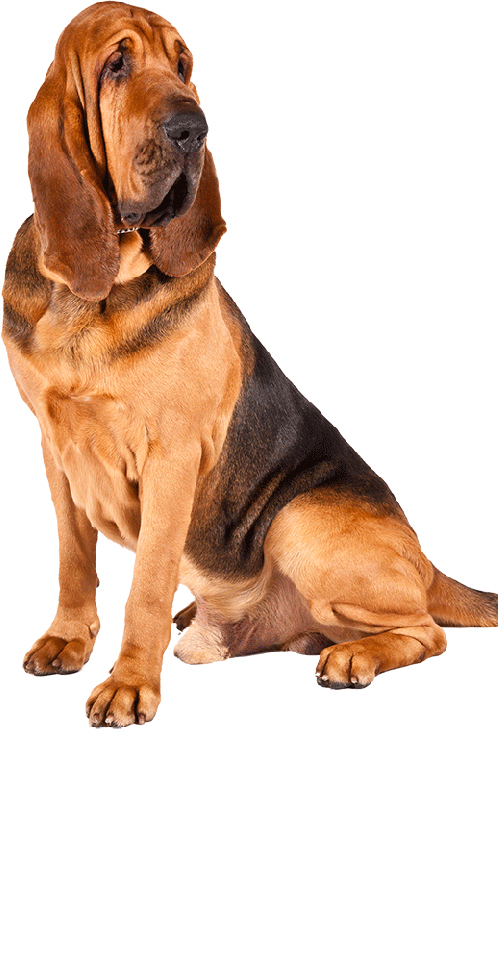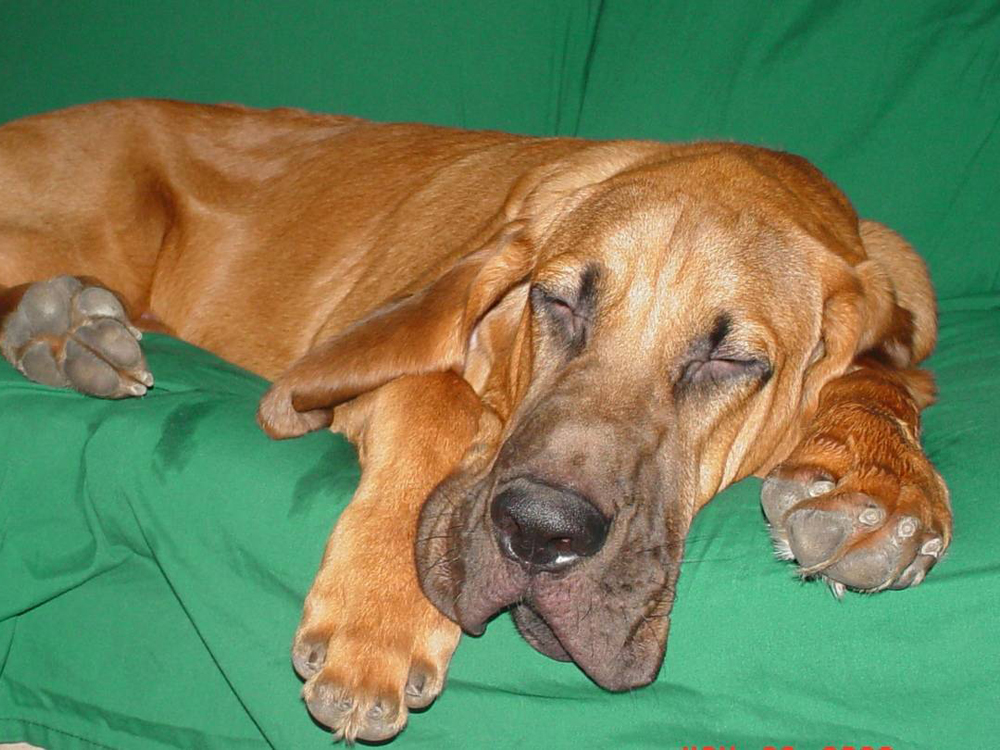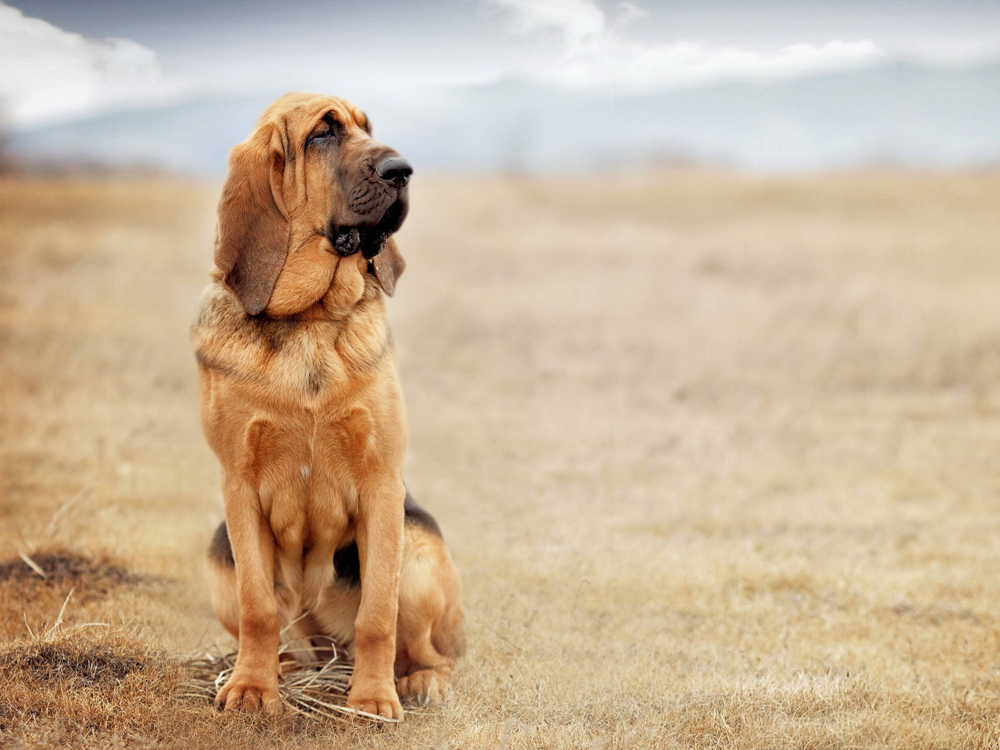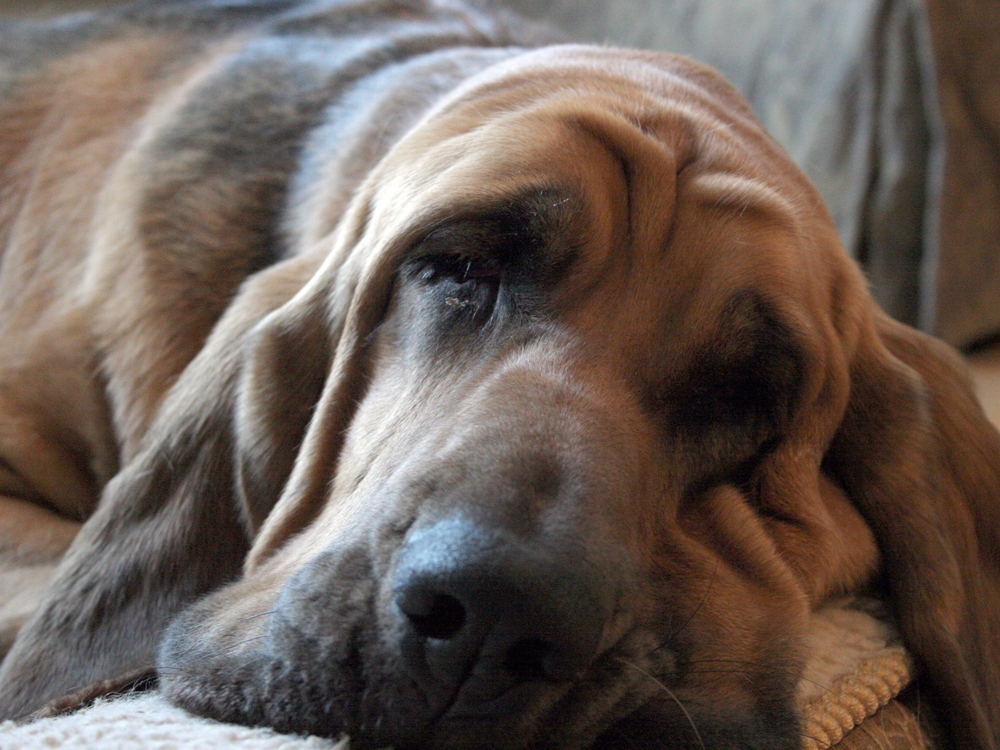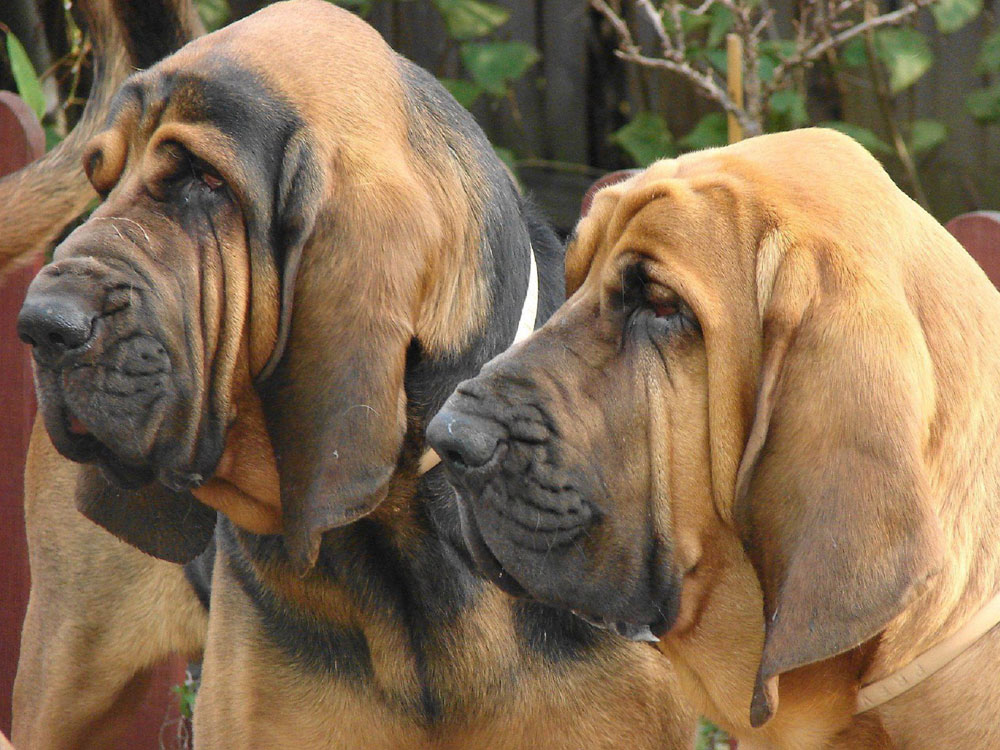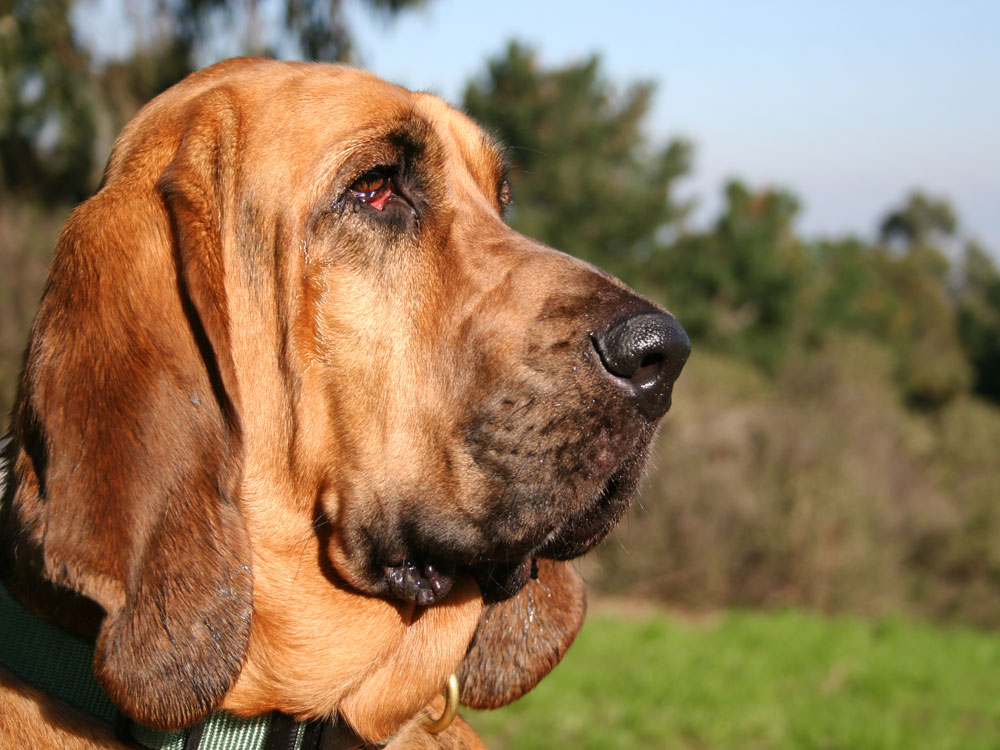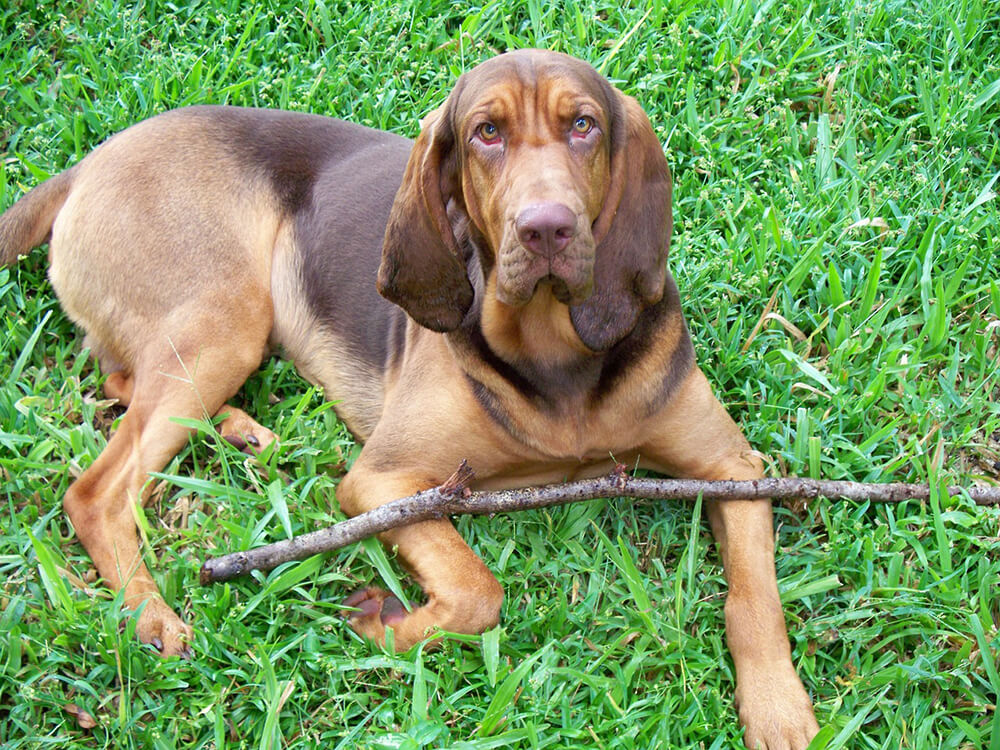
Bloodhound Breed Pictures
Vital Breed Stats
| Height: | 63 - 69 cm M | 58 - 63 cm F |
| Weight: | 41 - 50 kg M | 36 - 45 kg F |
| Breed Group: | Toy Dog Group |
| Life Expectancy: | 10 - 13 years |
| KC Registered: | No |
Breed Characteristics
| Size: |  |
| Grooming: |  |
| Exercise Level: |  |
| Trainability: |  |
| Barking Level: |  |
| Good with Children: |  |
| Good with other pets: |  |
| Affectionate: |  |
| Protective: |  |
| Cost to Keep: |  |
Give a thumbs up if you love the Bloodhound

0
More About the Breed
History
Bloodhounds are believed to have come from the hounds developed by Abbey St. Hubert monks in France in the 12th century. In 1066, William the Conqueror brought these St. Hubert hounds to England, and were given as gifts to monarchs and nobles.
As the popularity of the St. Hubert Hounds dwindled in France because of the French Revolution, they became more famous in England because aside from being great animal hunters, they were also used to track down criminals. The modern Bloodhounds we see today come from the specimens developed in England. They continue to be one of the most popular breeds and are used for tracking and K9 work. The breed is also a highly prized companion dog breed especially of people with active lifestyles.
Appearance
The Bloodhound is a large scent hound with a noble and honourable expression. This powerful dog weighs 80–110 pounds and stands 58–69 centimetres at the withers. It is often described as sad-looking because of its loose skin that forms creases and folds. It has a large yet narrow head, which is proportionate to its length and slightly tapering to its muzzle. It also has a long neck and a strong jaw with a perfect scissor bite. Its nose is black with open nostrils, whilst its ears are long that almost reach the ground. Its medium eyes are either hazel or dark brown. It has a remarkably large bone structure, apparent in its muscular shoulders and hindquarters.
According to the Kennel Club standards, the breed comes in these colours: black and tan, liver and tan, and red. A little bit of white on the chest, feet, and tip of the tail is permissible.
Grooming
It is very easy to maintain grooming-wise because its weatherproof coat is short and glossy. Regular brushing is needed to keep it healthy. This breed is known to drool and has that strong, off-putting hound odour, but that does not necessarily mean it is dirty. To lessen the odour, use shampoo with oatmeal and always wipe its mouth, skin, and folds.
The Bloodhound’s pendulous ears tend to suffer from recurring ear infections, so make sure it is always clean and dry. Dental health is also important, so tooth brushing should be introduced whilst it is a puppy so it will get used to this routine process. To ensure that your pet’s physical health is in top shape, keep its nails trimmed and skin checked for fleas and red bumps or spots. These aspects should definitely not be ignored to lessen chances of infection or other diseases.
Temperament
Intelligence
The Bloodhound is tenacious when it comes to following a scent, but it is a gentle, mild-mannered, and affectionate hound. It is never aggressive towards people or other dogs. As a breed that thrives in the outdoors, it is not recommended for people who live in apartments. It is better off in a farm or ranch in the countryside where it can freely roam around. Whilst it may be tolerant of children, it is better for families with older children that can handle large and active dogs. It can live with other dogs especially those it grows up with.
This breed is also known as a chewer, may it be food that smells so good or a new object that looks interesting. To remedy this, give it plenty of chew toys and introduce things that it can play with. Originally bred to trail deer and boar, today’s bloodhounds are used to assist the police in search and rescue. It is also a great family dog that requires a high level of care.
Nutrition
- Senior and less active: up to 1,800 calories daily
- Typical adult: up to 2,100 calories daily
- Physically active/working dog: up to 2,400 calories daily
Feeding
Health
Exercise
Cost of Ownership
The cost of owning a large dog is higher than a small one. For one, a large breed has a bigger appetite. High-quality dog food and treats cost £70 monthly per month. Basic necessities like beds, bowls, toys, leads, and others would be around £200–£300.
Neutering/spaying, routine veterinary visits, preventive care, and flea treatments can go around £1,500 for the first year alone. Obtaining pet insurance for your large hound is recommended in case of long-term treatments or major surgeries. Basic cover is around £70, whilst lifetime policy will roughly be £130 a month. Price range of this breed is around £700 to £1,100.
Is a Bloodhound Right for You?
- The Bloodhound is gentle and mild mannered.
- It is a large, energetic dog that requires plenty of exercise.
- It has a tendency to be stubborn and independent, which may be difficult for first-time owners.
- It is easy to groom but has that strong, off-putting hound smell.
- This hound is not aggressive and can get along with children and other animals.
